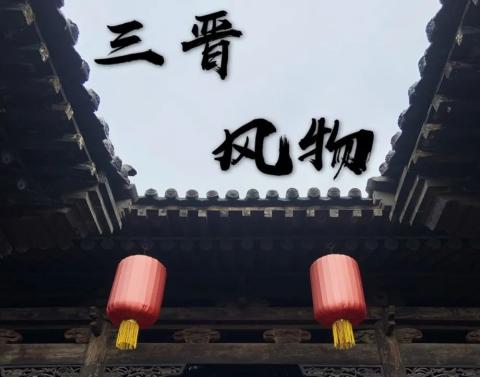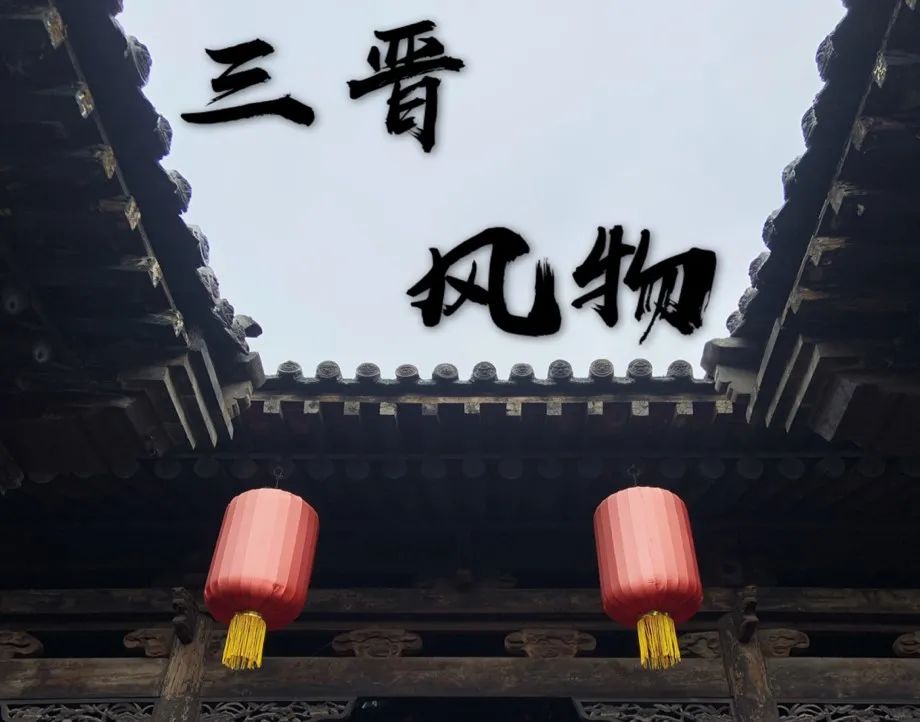
"Look at Beijing for a thousand-year civilization, look at Shaanxi for a three-thousand-year civilization, and look at Shanxi for a five-thousand-year civilization." As a person who likes to walk around, this trip to Shanxi has been planned for a long time.
Shanxi is located to the west of Taihang Mountain, hence its name. During the Spring and Autumn Period and the Warring States Period, it belonged to the Jin State, referred to as "Jin". In the early Warring States Period, Han, Zhao and Wei were divided into three parts of the Jin State, so it was also called the "Three Jins". This is the birthplace of the Chinese nation and the source of the Yellow River culture. Stories such as Emperor Yan's taste of herbs, Jingwei's reclamation of the sea, and Hou Yi's shooting of the sun all originated from this ancient land.
Sliced noodles, brains, oatmeal noodles, Qingxu enema, haggis cut, oiled pork, Fenjiu, Pingyao beef and big bowl of bald, Dingxiang steamed pork, bean noodles... are the taste of Shanxi; Yongle Palace murals, The main hall of Nanchan Temple, Pingyao Ancient City, Yingxian Wooden Pagoda, Datong Nine Dragon Wall, Yungang Grottoes, Jinci Notre Dame Hall, Hengshan Hanging Temple... are Shanxi's time that has been frozen for thousands of years.

DAY·1 Splendid Jinyang City
Taiyuan was formerly known as Jinyang, also known as Bingzhou and Longcheng. It is the capital of Shanxi Province and has a history of more than 2,500 years. It is surrounded by mountains on three sides, and the Fen River, the second largest tributary of the Yellow River, flows from north to south. "Splendid Taiyuan City" Take the K5227 train from Beijing West Railway Station to Taiyuan, the whole journey takes 9 hours and 40 minutes.


Often the most local delicacies are hidden in the fireworks in the market. In the morning in Taiyuan, nothing can start the day more happily than a bowl of mutton soup and a cage of shaomai.


The Shaanxi Provincial Museum, located in downtown Taiyuan, displays the frozen time and lasting humanistic spirit of the Three Jin Dynasties.

The treasure of the town courtyard - Bird Zun: unearthed from the Jinhou Cemetery in the Jin Cultural Site in Qucun. "Zhou Li·Chun Guan·Sizun Yi" records that there are so-called "six statues and six Yi statues" among the ancient sacrificial ritual vessels, and the "bird statue" is one of them. The body of the bird is plump, the wings are rolled up, the back of the bird is covered according to the shape, and the cover button is in the shape of a small bird. There is an elephant head under the phoenix tail, and the trunk and legs form a stable three-point support. The inside of the cover and the bottom of the belly of the bird statue are inscribed with the inscription "The Marquis of Jin Zha Xiang Taishi Baozun Yi". The owner of this bird statue is a high-standard sacrificial vessel owned by Xiefu, Marquis of Jin, the son of Tang Shuyu.

The "Pig Zun" was unearthed from the tomb of Jin Hou Xiefu's wife. The inscription on the lid and belly is: "Marquis of Jin Zha (composed by) Lu Xi". "飤" is the same as "food", and is often used in inscriptions on bronze food vessels. This statue has a small mouth and a hollow belly. It should be a wine vessel for holding wine. It is rare for a wine vessel to be inscribed with "飤".

The Houma League Book is a jade piece cultural relic unearthed in Houma City, Shanxi Province, China, from 1965 to 1966. Because the text on this jade tablet contains the words recorded in the alliance oath between various vassal states or ministers during the Spring and Autumn and Warring States Period, it is called "Shu Shu" or "Shu". "Zhou Li·Simeng" "Method of Holding Alliance Zai" notes: "Zai means an oath of alliance. The alliance members write down their words and policies, kill the animals to collect their blood, beat the animals, add a note on them and bury them, which is called Zai. "Book." In order to consolidate internal unity and combat hostile forces, the princes and officials at that time often held such oath-taking activities. The alliance letter is made in two copies, one is hidden in the alliance mansion, and the other is buried in the ground or sunk in the river to win the trust of gods and ghosts.

Lacquer painting on wood This artifact was unearthed from the tomb of Sima Jinlong. The board is painted with vermilion lacquer, and the story of "The Biography of Women" is painted in four upper and lower layers. The lines are black, the faces and hands of the characters are painted lead white, and the clothing and equipment are in yellow, white, green, orange-red, gray-blue and other colors. The inscription and list were painted with yellow paint, and the text was written in ink. The painting style is close to that of Gu Kaizhi. The writing on the inscription and list is somewhere between official and regular script, with a sparse and clear style, which is rare in Northern Wei Dynasty ink. Wooden lacquer paintings are the product of cultural integration during the Southern and Northern Dynasties and have extremely high historical and artistic value.
As the saying goes "If you don't come to Jinci Temple, you will miss Taiyuan" . The beauty of Jinci lies in its integration of long historical cultural relics and beautiful natural scenery. There are more than a hundred palaces, pavilions, pavilions, bridges and pavilions among the towering ancient trees.




DAY·2 Pingyao Ancient City
The ancient city of Pingyao was first built in the period of King Xuan of the Zhou Dynasty and expanded in the third year of Hongwu in the Ming Dynasty. It has a history of more than 2,700 years. Today, the basic features of the county town during the Ming and Qing Dynasties are still relatively intact. It is the most complete existing ancient city in the Han ethnic area of China.



During the National Day holiday, the streets of Pingyao Ancient City were filled with five-star red flags, adding a touch of bright color to the ancient streets in the misty autumn rain.

In addition to antique traditional Chinese buildings, there are even many Western buildings and Suzhou garden-style buildings that can be seen everywhere in the ancient city of Pingyao. It fully embodies the characteristics of the integration of ethnic groups and the integration of Chinese and foreign cultures in the land of Sanjin since ancient times.



DAY·3 Datong, the ancient capital
Datong is at the northern end of Shanxi, known as Yunzhong and Pingcheng in ancient times. It is located in the center of the Datong Basin, at the junction of the three provinces of Shanxi, Hebei and Inner Mongolia, and at the northeastern edge of the Loess Plateau. It is the northern barrier and gateway of the Shanxi Province, and the chokepoint between Shanxi, Hebei and Inner Mongolia. , adjacent to Mongolia's largest port, Erenhot City, to the north. It is a battleground for military strategists of all ages and is known as the "Key to the North". There are many historical sites in the territory, such as Yungang Grottoes, Huayan Temple, Shanhua Temple, Hengshan Hanging Temple, Nine Dragons Wall, etc. It is also China's largest coal energy base. Datong is also one of the nine ancient capitals in China, but the ancient city has long been lost in the long river of history, and only a few mottled historical traces remain in the renovated ancient city walls.

The city wall and the modern city high-rise buildings in the distance complement each other. The alternation between the old and the new shows the tolerance, diversity and longevity of a city.



Yungang Grottoes are located at the southern foot of Wuzhou Mountain, 16 kilometers west of Datong City. Built in the Northern Wei Dynasty, it is famous for its exquisite carving skills and colorful stone carvings. The largest statue in Tan Yao Five Grottoes is 17 meters high. There are more than 50,000 statues here, which are very spectacular, ranging from more than ten meters in size to a few centimeters in size. Their shapes and expressions are very moving. The Buddha statues here are severely weathered, and some small Buddha statues only have shadow marks. Yungang Grottoes, Dunhuang Mogao Grottoes, Longmen Grottoes and Maijishan Grottoes are called the four major grottoes in China and are treasures of ancient Chinese culture and art.



At the end of the trip, the happy National Day holiday is gone forever, and the travel plan has come to a successful conclusion. I bid farewell to Shanxi with a full serving of Shahe County charcoal-fired mutton pot from three in the morning. I wish everyone a good start and a warm autumn!

